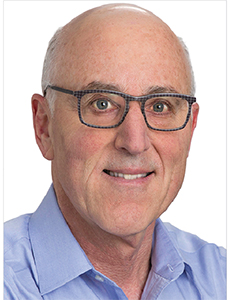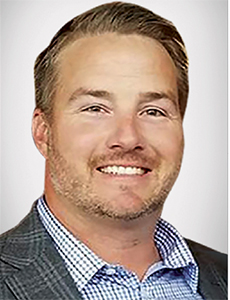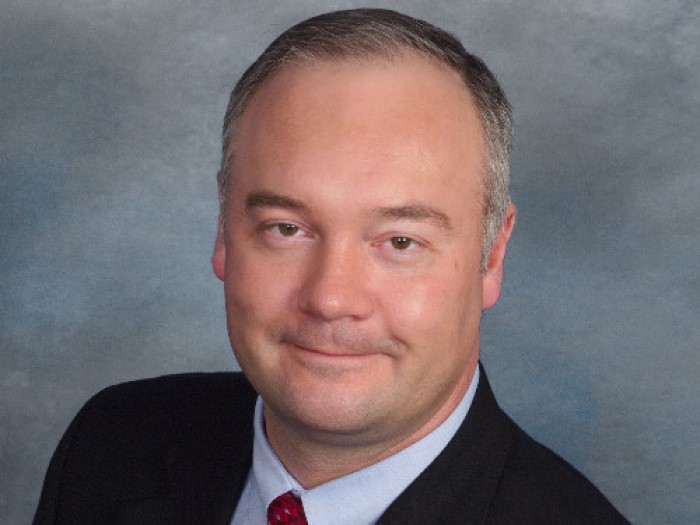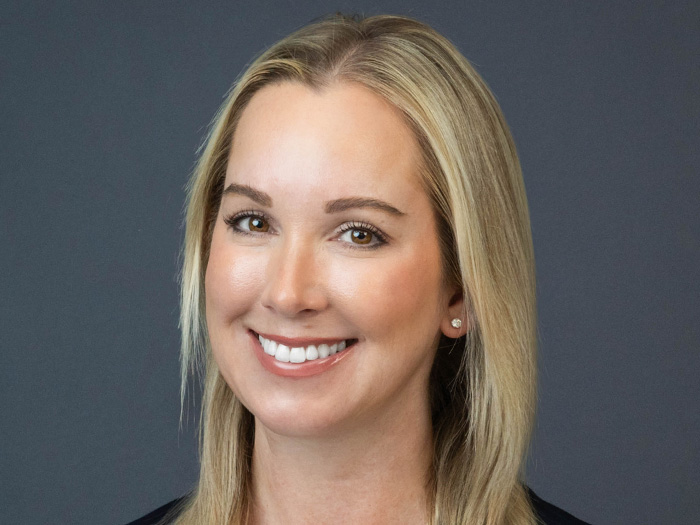Fatigue Costs Your Business More Than You Think — But It Doesn’t Have To

Fatigue as a safety risk doesn’t get a lot of attention until it affects pilots, train conductors or other people in safety-sensitive positions.
But fatigue can be a significant injury risk and loss driver for any company. The risks have increased as medical claim costs continue to rise and as a larger percentage of the workforce is stretched thin and more likely to be working some kind of side hustle, whether it’s driving for Uber or loading trucks overnight for UPS.
According to the National Safety Council, fatigued workers cost employers $1,200 to $3,100 per employee, annually, in productivity losses alone. But little reliable data exists on the true cost of fatigue-related injury claims, mostly because fatigue is often overlooked as an injury contributor.
Fatigue isn’t any single, simple hazard. The causes of fatigue are varied, which presents challenges for employers trying to get a handle on the risk. But an effective program of fatigue management can encompass all causes, help raise risk awareness and prevent serious injury.
The Culprits Are Diverse
Episodes of fatigue serious enough for workers to put themselves or their colleagues at risk can be caused by any number of things.
Medications are one factor. Opioids and antidepressants can create serious hazards when workers are struggling to stay alert. But even far milder medications and over-the-counter meds can be a problem. An employee taking Claritin D for allergies or Nyquil to stave off a cold can be almost as much of a risk in the workplace as someone taking oxycontin.
The use or abuse of any substance is a known fatigue risk, partly for the sedating effects of many of them. Stimulants are not without risk, because some produce a crash of overwhelming fatigue as they leave the body.
Medical conditions like chronic lung disease, diabetes, thyroid issues or anemia can cause feelings of fatigue or exhaustion. This also affects people undergoing chemotherapy, or recovering from a stroke or heart disease.
Run-of-the-mill fatigue is one of the trickiest challenges for employers, because they’re usually operating blind. Unless an employee is prone to oversharing, there’s little way for an employer or supervisor to know if an employee had a long night with a crying infant, stayed up late partying or writing a paper for a night class, or just had a bad bout of insomnia.
A person suffering from fatigue for any of these reasons may suffer from microsleep episodes, where parts of the brain go offline for a few seconds while the rest of the brain stays awake. If a person goes into a microsleep while operating heavy equipment — or while moving in the path of heavy equipment — the risk of injury in the workplace becomes significant.
Unfortunately, not all causes of fatigue are clear or obvious, and it’s possible for anyone to be suffering the effects of fatigue without fully realizing it.
“We’re hooked on our electronic devices; we’re hooked to email, work related and otherwise … all the way to bedtime,” said Dr. Robert Goldberg, chief medical officer for Healthesystems.
“It’s hard to turn off our brains. With social media, it’s the same thing — maybe even worse.”
Muscle fatigue is sometimes viewed as a separate issue, but there’s value in addressing it together with other types of fatigue. Muscle fatigue can lead to diminished productivity, poor motor control and risk of acute injury. Muscle fatigue sustained over time is considered to be a precursor to work-related musculoskeletal disorders, such as shoulder injury or low-back pain.
Experts note that many of the same strategies used to combat other types of fatigue will also help with muscle fatigue, which is plenty of reason to design a program expansive enough to include it.
The Right Data Will Deliver
A strong fatigue management plan should be built on a foundation of data. The quality of that data is key, said Brent MacLean, general manager of Medical Claims Management Solutions for Conduent, a firm that creates integrated digital platforms for businesses and governments.
MacLean said the biggest problems he sees in the field are companies either struggling with inadequate information or those that have more than enough data but no idea how to leverage it.
Noted MacLean, “70% of the programs that we’ve come across and we’ve done assessments on, they seem to be missing … about two-thirds of the data that you need when you take in a claim [in order to] really drive a positive outcome on the back end.”
It’s critical that employers start asking the right questions early on, during conversations with the injured worker or their supervisor, taking in all of the key elements around a claim. The right questions — when did your shift start? How far were you into your shift? — can help reach a higher level of granularity to help spot fatigue-related trends.
“A lot of times, it comes up during conversation whether they were rolling onto their second job, whether they were working double shifts … those things tend to come up during those initial triage calls,” MacLean added.
Other companies have plenty of data. But they don’t have effective means to translate the data into actionable information.
“Most of those companies seem to be in paralysis mode on it. You can put all the technology on it, but if you’re drowning in information and you can’t get to what’s relevant with the right actions … it can be your best friend and it can be your worst nightmare. So it’s a little bit of both.”
The right data, optimally leveraged, helps companies better understand how to target their fatigue risk, said MacLean.
“You’ve got to have all that data on where [injuries are] coming from, how they occurred and be able to parse that down to the smallest level — whether it’s a region, whether it’s an office, whether it happened during a third shift — all of that information is the most relevant to then determine the appropriate actions.”
Focus on Root Causes
Technology is playing an increasing role in how employers address and manage fatigue risk. Biometric sensors are being employed to measure various type of muscle activity, alertness and proper body mechanics.
These advances are useful tools. But it’s important that employers don’t get so caught up in applying technology to the problem they forget to step back and take a broader view of their operations.
Putting the emphasis on technology, said Goldberg, “is yet another indicator of the wrong direction we’re going. So instead of addressing the root causes of the issue, we’re looking for technology to help fix the symptoms.”
“You can put all the technology on it, but if you’re drowning in information and you can’t get to what’s relevant with the right actions … it can be your best friend and it can be your worst nightmare. So it’s a little bit of both.” — Brent MacLean, general manager of Medical Claims Management Solutions, Conduent
Goldberg noted that shift work remains a driver of fatigue-related issues in the workplace, and it’s an area ripe for re-evaluation as manufacturing processes continue to be transformed by technology. Employers may be overlooking opportunities for substantive change that would directly impact fatigue risk.
“If a workplace is doing some kind of shift work, then they need to evaluate first the necessity for shift work and secondly, what kind of rotation schedule they have.”
Goldberg emphasized companies should “not do rotating shifts and shift rotation schedules based on what they’ve been doing for the last 10, 20, 30 years. They should look at it anew in terms of businesses necessity and then look at it from the current health and safety perspectives on the best way to do it.”
Shift lengths should also be assessed according to business necessity and safety realities, he added. Workers may prefer the opportunity to work longer days in exchange for working fewer days, but that isn’t always the right way to go, from a safety or productivity standpoint.
“Most people, after about seven or eight hours, are mentally if not physically pretty cooked, depending on the intensity of the work or the boredom of the work. So once you hit about 10 hours, you’re really at risk. Then when you’re pulling 10-, 11-, 12-hour shifts or back-to-back shifts, people are being put at even greater risk for fatigue and therefore an injury.”
Know When to Change Things Up
To help manage fatigue, experts recommended programs that are simple and easy to implement such as stretch breaks.
“A lot of companies [are] starting to introduce rest breaks allowing people to take a stretch break or a rest break throughout their workday. That’s an amazing tool to allow for people to recover when you’re using the same muscles over time,” said Kris Smith, managing member of Arizona-based GSC On-Site Services.
“A good stretching program allows people to use different muscles. Those mini-breaks can make a huge difference in reducing the impact of fatigue.”
Smith added that some companies have even taken the step of alerting people when to take a stretch break, using some type of alarm or buzzer.
“Everybody gets used to that, meaning that they need to change positions or move or do something different,” she said.
Practices like job sharing and job rotation are more complex to implement than stretch breaks, but the potential benefits are significant, said Smith.
“We tend to see that people get stuck in a job because they learn it well, so they’re the fastest or they produce the best quality. But that repetitive load or high load can really be an impact factor.”
Added Smith, “Job rotation is a wonderful way for companies to break up the same body parts and muscle groups. It forces people to be more aware, because they’re not doing the same thing every day.”
It’s also a strategy that’s equally effective for an employee suffering from muscle fatigue as it is for a tired parent who stayed up all night with a sick child, she said.
Simply making an effort to take small breaks is also useful if the causes of fatigue are mental or emotional, added Silvia Sacalis, PharmD. VP, clinical services for Healthesystems.
“I think stress and fatigue in general, when you’re worn out due to what’s going on in your personal life, can have a significant, potentially adverse effect at work.”
Because supervisors can’t exactly dive in and grill an employee about what’s going on in their personal lives, Sacalis said, it’s worth considering common break spaces that are conducive to relaxation.
Employers can consider “offering them an out while at work — [a way to] take those breaks to get their minds off of it. Our company just added a small game room and a room that has a couple of massage chairs.
“So whenever you’re experiencing fatigue as an employee, whether that’s emotional fatigue or physical fatigue, that gives you … something else to look forward to doing, a mental break or an emotional break away from your job.”
It doesn’t have to be lavish or expensive, she added, “just a small area to provide an outlet from the regular mundane duties of your work, whether it’s computer work, machine work or whatever it is.”
Wellness programs are another tool employers can use to manage fatigue risk across the employee population, particularly because most wellness programs are already geared toward addressing the same health conditions that impact fatigue.
“Chronic conditions — diabetes, heart conditions, blood pressure, all of those preexisting kinds of conditions that can cause fatigue … can be managed better so that people can be more alert and aware and productive, and just feel better at work,” said Smith.
Healthesystems’ Goldberg agreed: “Employers should educate themselves and their employees on the issues of not only sleep, but how to take care of yourself in terms of diet, exercise, substance use and more.
“The healthier you are, the more fit you are, the better your diet is, the more you can control or prevent other medical conditions, and the more likely it is you’re going to sleep better and therefore come to work much more energetic and rested.” &












